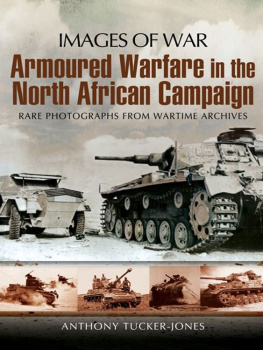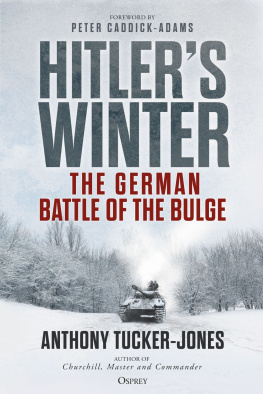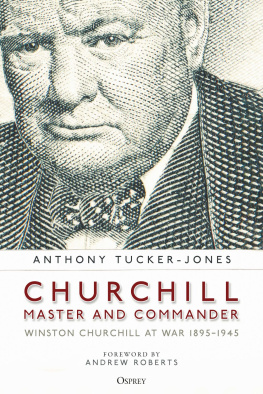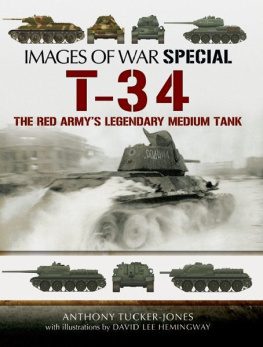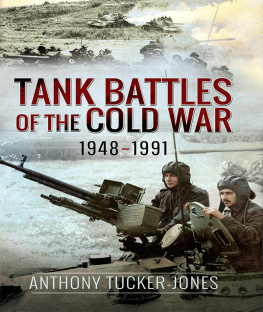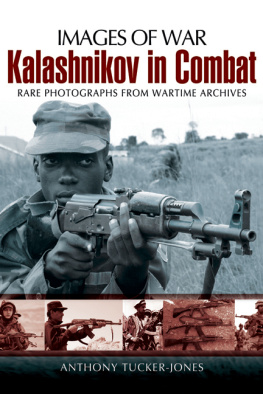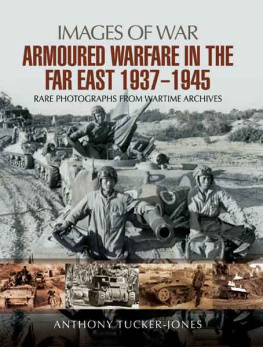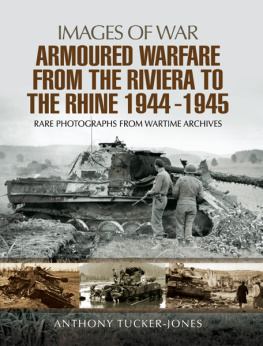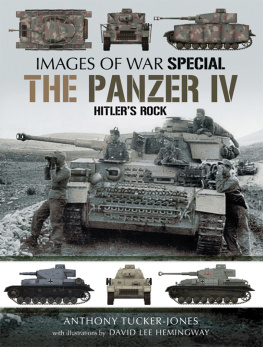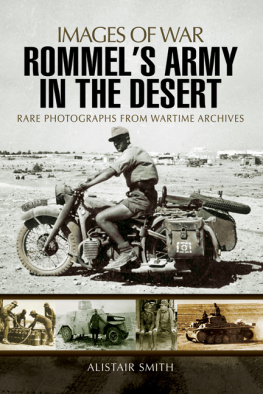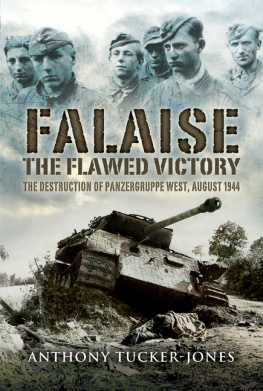
An M3 Grant medium tank in North Africa. ( US Army/NARA )

First published in Great Britain in 2011 by
PEN & SWORD MILITARY
an imprint of
Pen & Sword Books Ltd,
47 Church Street,
Barnsley,
South Yorkshire.
S70 2AS
Copyright Anthony Tucker-Jones, 2011
A CIP record for this book is available from the British Library.
ISBN 978184 884 5671
eISBN 978 1 78303 818 3
The right of Anthony Tucker-Jones to be identified as Author of this work has been asserted by him in accordance with the Copyright, Designs and Patents Act 1988.
All rights reserved. No part of this book may be reproduced or transmitted in any form or by any means, electronic or mechanical including photocopying, recording or by any information storage and retrieval system, without permission from the Publisher in writing.
Typeset by Chic Media Ltd
Printed and bound by CPI
Pen & Sword Books Ltd incorporates the Imprints of
Pen & Sword Aviation, Pen & Sword Family History, Pen & Sword
Maritime, Pen & Sword Military, Pen & Sword Discovery, Wharncliffe Local
History, Wharncliffe True Crime, Wharncliffe Transport, Pen & Sword
Select, Pen & Sword Military Classics, Leo Cooper, The Praetorian Press,
Remember When, Seaforth Publishing and Frontline Publishing.
For a complete list of Pen & Sword titles please contact
Pen & Sword Books Limited
47 Church Street, Barnsley, South Yorkshire, S70 2AS, England
E-mail: enquiries@pen-and-sword.co.uk
Website: www.pen-and-sword.co.uk
Contents
Introduction
T he battles fought in North Africa during the Second World War are largely remembered for the exploits of Field Marshal Erwin Rommel, the Desert Fox, and the British 7th Armoured Division, the Desert Rats. Field Marshal Bernard Montgomery also established his reputation there with the decisive victory at El Alamein that sealed Rommels fate.
The highly mobile armoured warfare in North Africa was essentially a clean war, a soldiers war. The open desert wastes in Egypt and Libya were ideal for tanks, with few towns and civilians to distract from the business of fighting (or, indeed, result in atrocities). When the fighting moved into Tunisia, the landscape changed, with the Axis forces taking to the mountains. North Africas geography and climate meant that the style of mechanised warfare fought there was very different from that in France, Italy and Russia.
The vast Western Desert stretches almost 400 miles from El Alamein in Egypt to Gazala in Libya. Some 150 miles to the south are the Jarabub and Siwa oases, while north of the coastal road lies the shore of the Mediterranean Sea. Along the coast of Libyas Cyrenaica province are Bardia and Tobruk, then the coastal bulge at Djebel Akhdar with the towns of Derna and Benghazi, and further westward Mersa Brega and El Agheila. Key choke-points are the Fuka, Halfaya and Sidi Rezegh passes. It was from Agheila to Alamein and back again that the critical battles between the Eighth Army and the German Afrika Korps took place.
The vast, open desert sands of North Africa seemed an ideal place to fight decisive tank battles, but things are rarely that simple. Both sides struggled to maintain their lengthy and dangerously exposed lines of communication; any victory inevitably meant additional supply problems for the victors, which then tilted the fortunes of war back the other way. The naval and air war in the Mediterranean also impinged on both sides ability to deliver vital supplies and replacement equipment.
The basic tasks of moving, resupply and reconnaissance soaked up the lions share of the time; combat was typically restricted to daylight and even then actual fighting only accounted for about three or four hours a day. British armoured and infantry units at nightfall often withdrew up to 5 miles from the scene of the action to form protective leaguers, like old-fashioned wagon trains. At rest both sides formed protective boxes with all-round covering fire for defence.
By June 1940 France was out of the war, leaving Benito Mussolini free to attack British-controlled Egypt from his Libyan colony. With almost half a million Italian troops in Libya and in Italian East Africa, the situation in Egypt looked particularly grim. Nonetheless, while Mussolinis forces enjoyed supremacy in the air and at sea, his armoured fighting vehicles were another matter altogether. The Italian Army suffered from poor mobility and limited mechanisation, both crucial ingredients for prosecuting a successful invasion.
Although Mussolini was convinced that Britain would surrender after the fall of France, by August 1940 Winston Churchill had not succumbed to Adolf Hitlers plans for a Nazi invasion of Britain and the Italian dictator was forced to strike in Egypt. Unfortunately for the Italian soldiers, Mussolini had gained an inflated impression of his military capabilities following his invasion of Abyssinia and his intervention in the Spanish Civil War in the mid-1930s.
Hitler and other advocates of mechanised warfare had watched with interest the Italian Armys performance during both of these wars. In fact, Hitler had tried to dissuade Mussolini from his Abyssinian conquest, seeing it as an unnecessary diversion, but in 1935 Mussolini had thrown three army corps, supported by light tanks, artillery, aircraft and poison gas, against the Abyssinians. An Abyssinian counteroffensive drove Mussolinis forces back, ironically using German- and Japanese-supplied weapons. Air power was the deciding factor in Abyssinia, not tanks. In May 1936 Mussolini annexed the country and then committed himself to General Francos Nationalist cause in Spain.
His forces first saw action during the Malaga campaign in 1937, and on this occasion nothing could stop the Italian light tanks not least because a third of the Republican troops did not even have rifles. Mussolini was elated by the prowess of his troops. In February 1937, however, in what is generally regarded as the first armoured battle of modern times, at Guadalajara, north-east of Madrid, his light tanks proved all but useless in the face of local Republican air superiority and armour.
Mussolinis invasion of Egypt in 1940 turned out to be half-hearted, to say the least. Unfortunately Churchill missed his chance to finish off the Italian Army after the remarkable victory at Beda Fomm, as he was distracted by Mussolinis ill-conceived invasion of Greece and allowed the British momentum in North Africa to be lost. At this point Hitler stepped in, propping up his ally by dispatching to his aid the Afrika Korps under Erwin Rommel. Within two weeks Rommel had reached the Egyptian frontier, with only Tobruk holding out in his rear. The Australian defenders, however, resolutely refused to give up and for the first time the panzers found themselves driving through infantry who did not automatically surrender.
All the successes of Generals Wavell and OConnor were swept away in a month. The Berliner Illustrierte ran a series called The Heroes of Halfaya, relating how Rommel had thrashed the British in a three-day battle. War correspondent Alexander Clifford saw captured copies and noted: it was good, exciting stuff, surprisingly complimentary to the British.
During the next two years Rommel took on a succession of British commanders, in the process perfecting his defensive-offensive method of mechanised warfare in Rommels parlance, first the shield, then the sword. At first, repeated British efforts to drive Rommel back from the frontier were unsuccessful, but Hitlers apparent indifference to the North African campaign until it was too late meant that Rommel found himself fighting a war of attrition that he could not win, despite his genius as an armoured fighting tactician.

